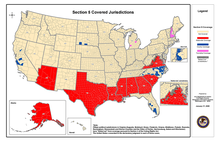I did in fact make it to church this morning, which weirdly enough got me pondering predictive models. The connection's not as tenuous as you might think. The church I've been going to is incredibly large...the building that is. My best guess is it could easily hold 1000 people. From what I've counted*, there seems to be about 100 people there on typical Sunday mornings, which makes the place seem quite cavernous. This morning I was not able to do my normal count (I let a seven year old pick where to sit, and ended up in the front row), so I was only able to get a brief glance at the crowd. It occurred to me that it's extremely hard to estimate the size of a crowd that is in such an outsized space, especially when that crowd distributes themselves as New England churchgoers tend to.
All of this got me to browsing around the web, looking for any data on church attendance, which led me to this article for church leaders about attendance trends. It's a bit long, but it has some interesting research in to who goes to church and who says they go to church. What struck me as interesting though, was point number 7, on page number 5. If you don't feel like clicking on the link, it's a model of how church attendance in America will look by 2050 (percentage of population down, raw numbers up).
What struck me about this was what a funny thing this was to model. In order to model church attendance, one must fundamentally presume that it is a purely sociological phenomena that is likely to trend consistently for 40 years. While I think that can make for some interesting numbers on a screen, it actually seems to violate some assumptions most Christians themselves would hold (i.e. that there is a Divine force involved that might not work on a linear scale). I'm not saying he shouldn't have modeled this, but it did get me thinking about what types of behavior lend themselves to modeling and which ones do not. Some phenomena change linearly, some exponentially, some decrease/increase step-wise. I'm not sure which one church attendance fits in to, but I'd be interested in seeing the rationale for picking one over the others.
I've had a few people send me some studies that relied on models, and I think I'm going to try to take a look at some of them this week. This could get interesting.
*I count people during hymn singing time. I probably started doing this when I was about 4, as far as I can recall.








